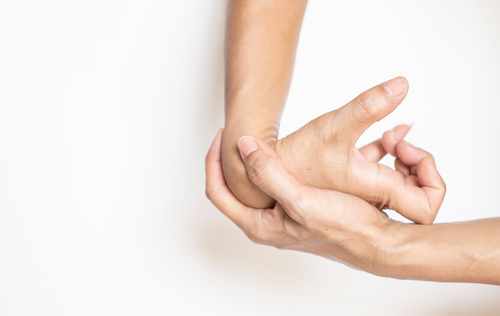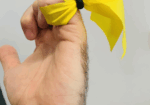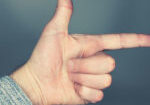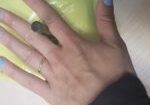Rapid Review By: Mikayla Murphy
Kerr, L., Jewell, V. D., & Jensen, L. (2020). Stretching and splinting interventions for post stroke spasticity, hand function, and functional tasks: A systematic review. American Journal of Occupational Therapy, 74, 7405205050. https://doi.org/10.5014/ajot.2020.029454
The Skinny
This study focused on the benefits of stretching the upper extremity to decrease spasticity, increase hand function, and improve functional tasks in post stroke patients. The authors looked at four methods of reducing spasticity: stretching devices, static splinting, dynamic splinting, and manual stretching.

In the Weeds
This study was a systematic review, meaning it complied the results of several other studies in order to better understand all the current research evidence. The authors collected studies that focused on the treatment of the upper body of individuals 18 and older who had spasticity after a stroke. The studies also needed to have an evidence level of III or higher. The authors identified 11 studies that fit their criteria.
Bringing It Home
Stretching devices, static splinting, dynamic splinting, and manual stretching all increased hand function and improved functional tasks to varying degrees. Stretching devices were found to have strong evidence for reducing spasticity. Static and dynamic splinting both had low evidence for reducing spasticity, and manual stretching was not studied in regards to reducing spasticity. Static splinting, dynamic splinting, and manual stretching were found have moderate strength of evidence for increasing hand function. Stretching devices had a low strength of evidence for increasing hand function. Static splinting, dynamic splinting, and manual evidence all had a moderate strength of evidence for improving functional tasks. Stretching devices again had a low strength of evidence for improving functional tasks.
There were also some non-statistically significant conclusions drawn. Dynamic splinting was more effective than static splinting by self-report. Interventions were more effective when done in conjunction with an occupational or physical therapy session (as opposed to simply with a home exercise program), highlighting the need for hands-on intervention in addition to stretching activities.
Rating
This study was a 3/5. The systematic review itself was well-done, but severely limited by the lack of available studies. Additionally, the studies were not homogenous. For example, the intervention periods ranged from a half hour to six months between studies. In the end, the review does not change practice, but primarily highlights a need for more research in regards to upper extremity stretching and post-stroke spasticity.
2 Comments
Leave a Comment
More To Read
Wrist Fractures and Marijuana Use: What are the complications?
Title: Marijuana use and complications with healing after distal radius wrist fracture Article: Livesey, M. G., Bains, S. S., Stern, J. M., Chen, Z., Dubin, J. A., Monárrez, R., … & Ingari, J. V. (2025). Cannabis use in patients with distal radius fractures: a moment of unity?. Hand, 20(2), 263-268. The skinny The impact of tobacco use…
Read MoreTop 6 treatments for Pinky Fractures
Clients who have experienced a fracture of the finger or hand often find it difficult to participate in meaningful occupations. Everyday tasks from grasping items, cutting food, taking lids off containers, turning keys, and many others can be very painful. Pinky fracture is particularly challenging and painful. This is typical because the largest contributor to…
Read MoreTrigger Finger… Quick and Dirty!
This is for you… Hand Therapists! Stenosing tenosynovitis, otherwise known as trigger finger, is a common condition affecting children and adults of all ages. Fast Facts Trigger finger usually occurs at the A1 pulley It occurs with inflammation of the tendons and sheaths of fds and fdp The digit can lock in both flexion and…
Read MoreHow to Strengthen the Intrinsics with Puttycise Tools:
How to strengthen the intrinsic with Puttycise tools
Read MoreSign-up to Get Updates Straight to Your Inbox!
Sign up with us and we will send you regular blog posts on everything hand therapy, notices every time we upload new videos and tutorials, along with handout, protocols, and other useful information.







Can you provide an example of a stretching device? Thank you.
What would constitute a stretching device?